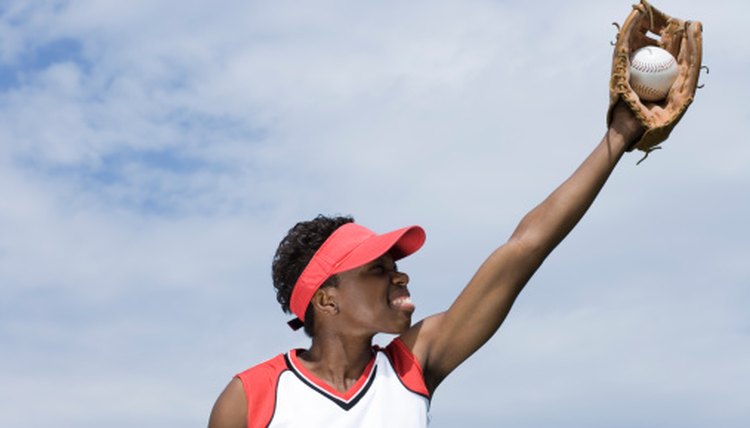The Best Softball Bats for Mushy Balls

Choosing the best softball bat is one of the first steps to successful hitting. However, with the wide variety of bat styles and compression ratings for the softball, choosing the best bat can be difficult. Softball leagues commonly use ball-compression ratings to categorize the ability of the softball to reflect off the bat. For example, low-compression balls rated at 375 pounds produce a “mushy” feeling. To match the mushy feeling, you need to use bats with specific materials and features for improved performance.
Performance
According to Craig Opal of Softball Hitting, the best softball bats for mushy balls are bats that don’t flex. By reducing the amount of flex with a stiff bat, you maximize the power transfer upon contact with the softball. Using a bat with a lot of flex will actually absorb the energy from a mushy ball, resulting in a soft hit.
Types
Most softball bat manufacturers produce different models designed for low-compression balls. For example, the Easton SZ700B is one of the best softball bats for mushy balls with the harder core and stiff design. The design of the SZ700B allows you to receive the same amount of performance when using a multiwall composite bat on high-compression balls. The best softball bats also have the same overall weight and feel as bats designed for flex.
Considerations
College Sports Scholarships recommends that you only use the stiff softball bats for games where mushy balls are used. Players commonly have multiple bat styles to match the type of ball being used. For example, a league tournament may use high-compression balls where you need a multiwall composite bat, while regular-season games use mushy balls where you need a stiff bat.
League Rules
Leagues and organizations such as the ASA, USSSA, NSA, ISA, SSUSA and ISF commonly regulate the types of bats used with a bat-performance factor -- BPF. The best softball bats for mushy balls meet these league requirements with a 1.20 BPF rating. The goal of using a low-compression ball and enforcing the bat requirements is to keep the players safe while preventing an unfair advantage to the offensive team.
References
Writer Bio
Based in Nebraska, Jeremy Hoefs began writing fitness, nutrition, outdoor and hunting articles in 2006. His articles have been published in "Star City Sports," "Hunting Fitness Magazine" and RutWear field journals, as well as on the Western Whitetail website. Hoefs graduated with a Bachelor of Science in exercise science from Nebraska Wesleyan University.
